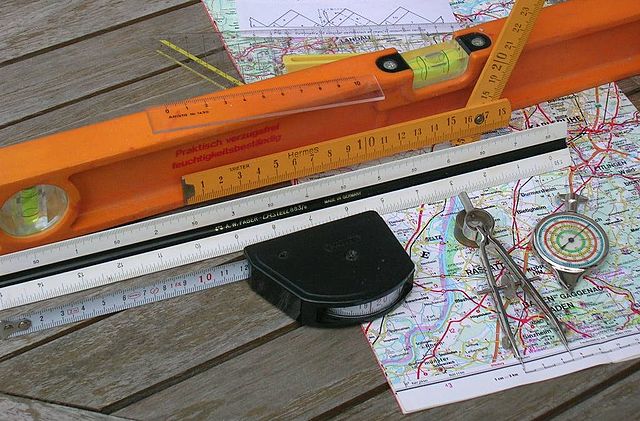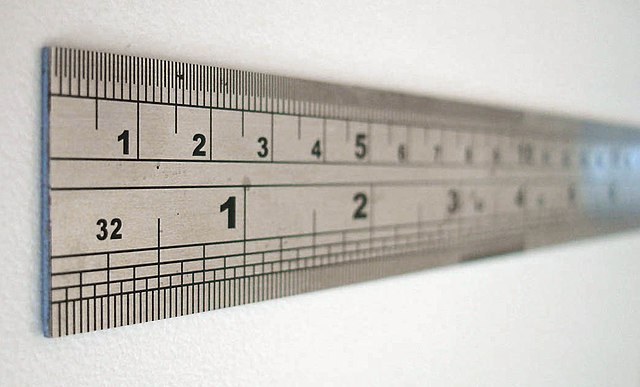A scale ruler is a tool for measuring lengths and transferring measurements at a fixed ratio of length; two common examples are an architect's scale and engineer's scale. In scientific and engineering terminology, a device to measure linear distance and create proportional linear measurements is called a scale. A device for drawing straight lines is a straight edge or ruler. In common usage, both are referred to as a ruler.
A triangular architect's scale, made of brass
Boxed set of 1850s ivory engineer's scales presented to the railway civil engineer George Turnbull in India. 16 scales are engraved.
A ruler, sometimes called a rule, scale or a line gauge, is an instrument used to make length measurements, whereby a user estimates a length by reading from a series of markings called "rules" along an edge of the device. Commonly the instrument is rigid and the edge itself is a straightedge, which additionally allows one to draw straight lines. Some rulers, such as cloth or paper tape measures, are non-rigid. Specialty rulers exist that have flexible edges that retain a chosen shape; these find use in sewing, arts, and crafts.
A variety of rulers
Retractable flexible rule or tape measure
A closeup of a steel ruler
Bronze ruler. Han dynasty, 206 BC – 220 AD. Excavated in Zichang County, China






